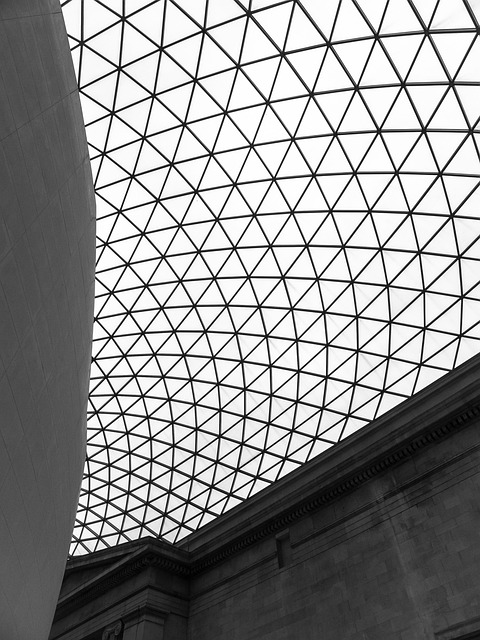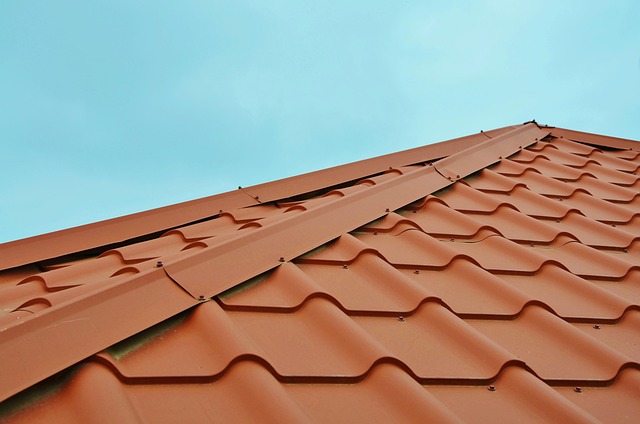Built-up roofing is a traditional yet effective system for flat commercial roofs, offering superior protection against moisture and elements. It consists of multiple layers: a base sheet (asphalt/bitumen), fabric reinforcement (glass fiber or polyester), and a gravel or aggregate top layer. Bitumen acts as an adhesive binding each ply together. This multi-layered design provides exceptional strength, durability, and insulation, making it ideal for low-sloping or flat roofs. Built-up roofing is cost-effective, easy to maintain, and offers energy efficiency. Proper maintenance and timely repairs are crucial for longevity, with regular inspections key to identifying wear and tear. Modern practices incorporate eco-friendly materials and lighter designs to reduce environmental impact while enhancing water management.
Built-up roofing systems, a common choice for flat commercial buildings, offer exceptional durability and protection. This comprehensive guide explores the intricacies of these multi-layered roofs, from their foundational construction process to the materials that contribute to their strength. We delve into the advantages of built-up roofing, maintenance best practices, and environmental considerations, providing valuable insights for property managers and contractors alike. Discover why this timeless roofing solution remains a top choice for flat commercial structures.
- Understanding Built-Up Roofing: A Comprehensive Overview
- Multi-Layered System: The Foundation and Construction Process
- Materials Used in Built-Up Roofs: Strength and Durability
- Advantages of Commercial Flat Roofs with Built-Up Systems
- Maintenance and Repairs: Ensuring Longevity and Performance
- Environmental Considerations and Sustainability in Built-Up Roofing
Understanding Built-Up Roofing: A Comprehensive Overview

Built-up roofing is a traditional yet highly effective system designed for flat commercial roofs. It involves layering multiple components to create a robust and durable covering. This method, often referred to as a multi-ply roof, starts with a base sheet, typically made of asphalt or bitumen roofing, which provides a protective barrier against moisture intrusion. Subsequent layers include fabric reinforcement, such as glass fiber or polyester, to enhance structural integrity and prevent tearing. The final step involves applying a gravel roof or a thick layer of aggregate, which not only adds weight for better holding power but also acts as a natural shield against UV rays and extreme weather conditions.
The process creates a strong, water-tight seal, making it ideal for low-sloping or flat roofs. Bitumen roofing plays a critical role in this construction by providing a flexible and adhesive layer that binds each ply together. This multi-layered design offers superior protection, ensuring the building’s interior remains dry and secure from external elements. Moreover, built-up roofing systems can be customized to meet specific requirements, making them a versatile choice for various commercial applications.
Multi-Layered System: The Foundation and Construction Process

A multi-layered built-up roofing system is a complex yet effective solution for flat commercial buildings, offering superior durability and protection. The foundation lies in a solid base of a primary membrane, typically a fiberglass or polyester sheet, which serves as the first line of defense against moisture intrusion. This initial layer is then followed by successive applications of bitumen roofing, a critical component in the construction process. Each additional layer, often consisting of a fabric reinforcement and gravel roof, adds strength and water resistance, creating a multi-ply roof structure.
The careful layering process involves adhering each new component to the previous one with specialized solvents or hot asphalt. This intricate assembly ensures that the final product provides an extensive barrier against environmental elements, making it ideal for commercial structures where robust and long-lasting roofing is essential. The result is a durable, flexible, and reliable built-up roofing system that can withstand the rigors of daily use and exposure to varying weather conditions.
Materials Used in Built-Up Roofs: Strength and Durability

Built-up roofs are renowned for their exceptional strength and durability, attributes primarily derived from the materials used in construction. The foundation lies in a strong base of heavy-duty sheets, typically made from steel or aluminum, which provide a solid framework. On top of this, a series of layers are meticulously added to enhance the roof’s performance.
The heart of a built-up roofing system is often bitumen roofing, a highly versatile and protective material. This is combined with multiple plies of reinforced fabric, such as asphalt or fiberglass membranes, creating a multi-ply roof. The layering process is then sealed with a gravel roof, offering an additional barrier against elements like water and UV rays. This intricate construction ensures the longevity of the roofing system, making it a preferred choice for flat commercial buildings that demand robust protection.
Advantages of Commercial Flat Roofs with Built-Up Systems

Commercial flat roofs equipped with built-up systems offer a range of advantages that make them a popular choice for many businesses. One of the key benefits is their durability; these systems are designed to withstand harsh weather conditions and provide long-lasting protection for the building below. Built-up roofing involves layering multiple materials, such as fabric, bitumen, and gravel, creating a robust and flexible membrane. This multi-ply roof structure effectively seals the structure, preventing water leakage and ensuring the structural integrity of the commercial property.
Moreover, bitumen roofing, a common component in built-up systems, provides excellent insulation properties. The gravel roof acts as a protective layer, shielding the underlying materials from extreme temperatures, thus reducing heat transfer into the building. This feature contributes to energy efficiency, leading to lower heating and cooling costs for businesses. Additionally, these flat roofs are relatively easy to maintain and repair, making them a cost-effective solution in the long term compared to other roofing types.
Maintenance and Repairs: Ensuring Longevity and Performance

Proper maintenance and timely repairs are paramount for built-up roofing systems to maintain their longevity and optimal performance. These multi-ply roofs, often composed of multiple layers including bitumen roofing and gravel roof, are designed to withstand harsh weather conditions but can suffer damage over time. Regular inspections are crucial to identify any signs of wear, such as cracked membranes or loose gravel, before they escalate.
During maintenance, cleaning the roof surface is essential to remove debris and algae growth. Repairs should be carried out swiftly, replacing damaged or missing components like flashing and sealing any gaps to prevent water intrusion. A well-maintained built-up roofing system not only extends its lifespan but also ensures the structural integrity of the building it protects.
Environmental Considerations and Sustainability in Built-Up Roofing

The environmental impact of built-up roofing systems is an increasingly important consideration in the construction industry. Built-up roofs, often consisting of multiple layers including a gravel roof or bitumen roofing, have traditionally been associated with significant ecological concerns. However, modern practices offer more sustainable alternatives within this system. By incorporating eco-friendly materials and efficient installation techniques, builders can create multi-ply roofs that minimize their carbon footprint.
These strategies focus on reducing the overall weight of the roof to lower structural demands, as well as selecting materials with recyclable or renewable content. Additionally, proper drainage systems in built-up roofing ensure water management, preventing water damage and minimizing the risk of environmental pollution associated with bitumen waste. As a result, the sustainable approach to built-up roofing not only benefits the planet but also extends the lifespan of commercial buildings.
